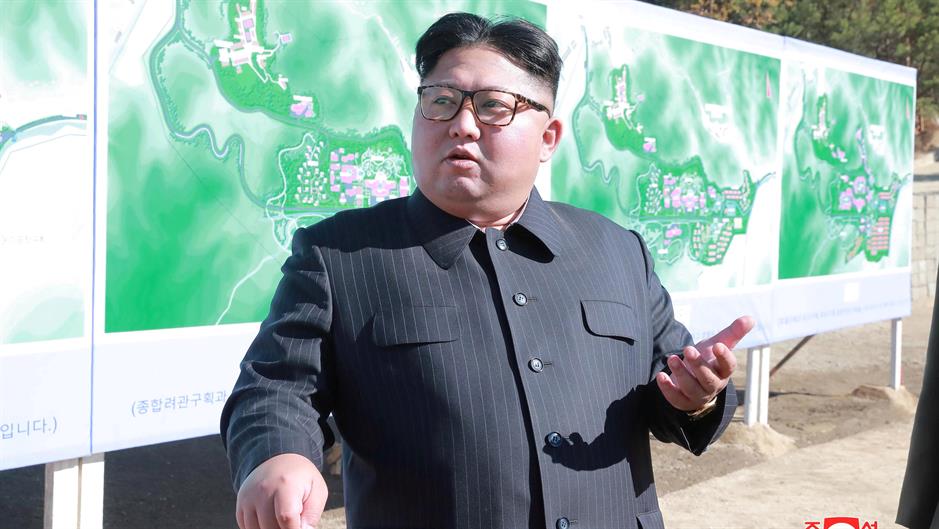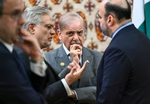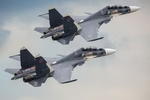
North Korea has launched two suspected "short-range missiles," South Korea's military said on Thursday, adding yet another complication into Pyongyang's stalled negotiations with the United States and peace talks with South Korea.
It launched the projectiles at 4:29 pm and 4:49 pm local time towards the east, which had an estimated range of 420 kilometres and 270 kilometres respectively, South Korea's Joint Chiefs of Staff (JCS) said in a statement.
The missiles had an altitude of around 50 kilometres and hit the East Sea, also known as the Sea of Japan, South Korea's Defense Military told CNN. It added that it had detected that one of the projectiles was launched from Sino-ri and the other was launched from Kusong, both in the North Pyongan Province, in northwest North Korea.
South Korea's President Moon Jae-in said North Korea may have launched the projectiles out of dissatisfaction with the outcome of the latest North Korea-U.S. denuclearization talks at the Summit in Hanoi that ended without agreement earlier this year.
Moon told South Korea's public broadcaster, KBS, that the launch of what South Korea's military suspects were short-range missiles might be an attempt by North Korea to "pressure" and "push forward the denuclearization dialogue in the direction they want" and to "urge for [renewed] talks soon."
Kusong has been the site of Pyongyang's missile tests in the past, including a May 2017 test of a KN-17 intermediate range missile which travelled almost 500 miles before splashing down in the Sea of Japan/East Sea, hitting the water about 60 miles from Vladivostok in eastern Russia, according to US officials.
Sino-ri is believed to be home to one of about 20 undeclared missile facilities that Pyongyang operates throughout the country, according to the Center for Strategic and International Studies' Beyond Parallel program.
"The US and South Korean intelligence authority is conducting analysis for additional information," JCS said in a statement.
"Our military has currently heightened its surveillance and alertness against possible additional launches, whilst maintaining combat readiness in close coordination with the US."
Blue House spokesperson Ko Min-jung, from the official residence of the South Korean President, said it is "very worried" about the projectile launch, saying it "does not help in improving inter-Korean relations."
Meanwhile, Pentagon spokesman Lieutenant Colonel Dave Eastburn said it was "aware of the reports and monitoring. As more information becomes available, I'll update you."
Thursday's firing comes less than a week after North Korea tested several new weapons systems, the first confirmed launches of their kind since 2017.
North Korean state media reported that the launches conducted on Saturday were part of a "strike drill" to "check the operating ability of large-calibre long-range multiple rocket launchers and tactical guided weapons."
But some weapons experts who analyzed the images of Saturday's launch released by North Korea say that Pyongyang may have test-fired a new, more advanced type of short-range ballistic missile - the type of weapon that in theory could carry a nuclear warhead.
Michael Elleman, a missile defence expert at the International Institute for Strategic Studies, wrote in a piece for North Korean speciality site 38 North that the weapon bore similarities to a Russian ballistic missile called Iskander.
Regardless of what was fired, analysts worry that an uptick in weapons testing from the North Koreans could impact nuclear negotiations with the United States and South Korea. Talks between the three countries have been on the rocks since a February meeting between US President Donald Trump and North Korean leader Kim Jong Un ended abruptly and without an agreement.
North Korea has been particularly vocal in its opposition to recent joint military drills between the US and South Korea. Seoul and Washington previously held large-scale military exercises in the spring, but this year chose to scale those back to "reduce tension" with North Korea.
South Korean President Moon Jae-in and Kim agreed at a summit with Kim last year to "make joint efforts to alleviate the acute military tension and practically eliminate the danger of war on the Korean Peninsula."
Moon and Kim's meeting was part of a flurry of diplomacy intended to reduce tensions on the Peninsula, as Washington and Pyongyang traded heated threats amid North Korea's repeated missile and nuclear tests.
North Korea's test pause is among the most important factors that has enabled negotiations between Seoul, Pyongyang and Washington. But a renewed round of missile launches could force the US to adjust course, as Trump has hinted that it could imperil the progress made between the two sides.
"I'm not in a rush, I don't want to rush anybody, I just don't want testing. As long as there's no testing, we're happy," Trump said ahead of his February summit with Kim.
Trump's top diplomat in charge of North Korea, Stephen Biegun, arrived in Seoul yesterday for meetings with his South Korean counterparts.
Kakvo je tvoje mišljenje o ovome?
Učestvuj u diskusiji ili pročitaj komentare





 Srbija
Srbija
 Hrvatska
Hrvatska
 Slovenija
Slovenija


























































